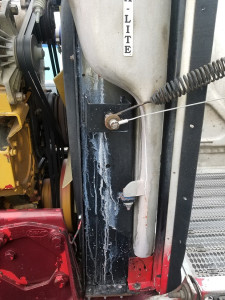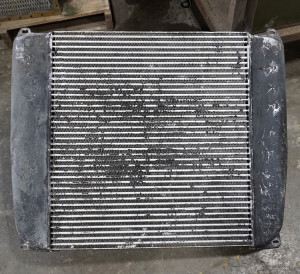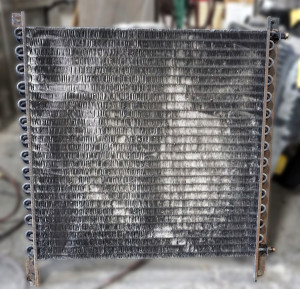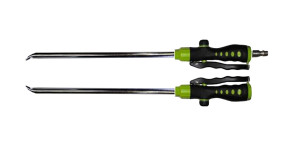What do you do when you find your rig has started overheating? The cooling system on the front of your truck is made up of vital components to keep your truck movin’ down the road. Some key factors in quickly diagnosing problems in your truck’s cooling system can be broken down into three separate functions that work closely together: radiator, charge air cooler, and A/C system.
BAD RADIATOR?
STEP 1
For the radiator, the most obvious sign would be that you are leaking coolant/anti-freeze, and the first thing to check is to locate where the leak is coming from. Also check if there is a clamp, hose or gasket leaking? Did the supports come loose and the fan blade hit the core? Is the tank broken or cracked? Does the leak appear to be coming from the core itself? If you have issues with any of these things, besides just a loose hose clamp or gasket, the radiator will most likely need to be removed and serviced at your local cooling repair shop.
STEP 2
If the core itself appears to be the source of the leak, the first thing to consider may be the age of the radiator. Standard Life Expectancy of a copper/brass radiator is approximately 10 years. Standard Life Expectancy of an aluminum/plastic radiator is approximately 2 to 3 years. If the radiator is nearing its term of life expectancy, you may consider replacing it versus repairing it.
BAD CHARGE AIR COOLER?
STEP 3
If the radiator isn’t the cause of your truck overheating, then you need to check your charge air cooler. Some common signs of your charge air cooler needing to be replaced include visual cracks along the sides where the tanks meet the core and low boost pressure. Most leaks in charge air coolers are too small to even show a loss in boost pressure but will wreak havoc when someone is trying to diagnose the issue. Most cooling shops have the equipment to test the charge air cooler for leaks while it is still mounted in the truck.
STEP 4
The most common cause for charge air coolers to fail is within the mounting. When mounting bushings are not changed regularly, they wear down and allow the unit to move and vibrate. This movement causes the metal to flex, and when metal flexes it cracks under pressure. Make sure to service your mounting bushings to prolong the life of your charge air cooler.
BAD A/C SYSTEM?
STEP 5
A well serviced A/C system has a clean cab air filter, no debris blocking the blower from pushing air through the evaporator, and a condenser that doesn’t have bent fins. Here are some of the more common signs if your A/C system is failing: electrical issues or low freon levels causing the compressor to not engage, lines that are broken or rubbed to point of damage, and/or bent fins on the condenser causing air flow restriction. If at any point the A/C system has been opened, whether it’s to replace a part or repair a damaged part, the A/C drier and orifice tube needs to be replaced. If your truck does not have a drier and orifice tube, it has an accumulator and expansion blocks. In this case, the accumulator would need to be replaced and the expansion blocks inspected for failure.
Note: Keep in mind that heat always travels to cold – cold doesn’t travel to heat. If the condenser has ample air flow going through it, the heat from the fluid transfers to the tubes, the tube’s heat transfers to the fin’s, and the fin’s heat transfers to the air. That’s why when your vehicle is sitting still, the A/C in the cab is warmer than when it’s moving down the road.
FINISH
Overall, if there is any kind of debris clogging your radiator, charge air cooler, or A/C system, it needs to be removed. The best way to remove debris without removing your cooling system from your truck or cleaned professionally, is to clean it with air and/or water pressure. We offer two different types of Radiator Genies – a short wand kit (09-2100092) or a long wand (09-2100094). Like our Engine Cooling Shop, we are always here if you have any questions.
Check out more Engine Cooling Options for your big rig at www.4statetrucks.com – Home of the Chrome Shop Mafia!




